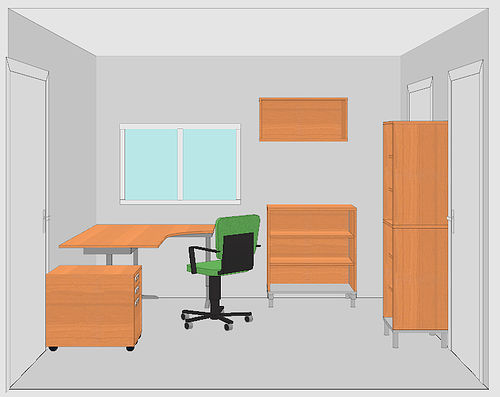 Many businesses today are carried out in traditional offices. This is a physical building that houses workstations to which workers commute every work day. Suppliers, advertisers and customers all go to that specific place to deliver or get goods and services. Although this business model functions, it involves much effort and time and can be avoided with virtual offices.
Many businesses today are carried out in traditional offices. This is a physical building that houses workstations to which workers commute every work day. Suppliers, advertisers and customers all go to that specific place to deliver or get goods and services. Although this business model functions, it involves much effort and time and can be avoided with virtual offices.

What Exactly Are Virtual Offices?
These offices refer to a work environment with telecommunications links and some equipment, but without a fixed office space. Employees, who may be in different parts of the world, get to communicate with suppliers and customers through technologies like the phone and internet. These workers rely on mobile devices like cell phones and laptops and might never meet one another physically. Other common features of virtual offices include services like mail couriers, answering machines and web conferencing.
Advantages of Virtual Offices
Among the major advantages of this business model is reduced costs both for employers and employees. Commuting to work every day can be a major cost for employees. Virtual offices allow workers to work from their homes hence avoiding the cost of commuting daily. Eliminating the daily commute can also make the workers more productive in the time that could have been spent travelling. With a virtual office, the employers save on the amount that could have been used for renting real office space and the equipment.
Flexibility is another benefit of this business model. Traditional offices are normally only open during specific hours and when employees are at work they cannot easily carry out other activities. A virtual office allows workers to set their own working hours and can take breaks whenever there is need to. For example, this office setup can allow a mother to work some hours in the morning, break to drive her children to school, and then get back to work until the time for picking them up comes.

Virtual offices also promote talent. With this business model, workers can be hired on the basis of their cost-effectiveness and expertise as opposed to their location. For instance, you could have a designer living in Paris, a shipper in Bangkok, a director in New York and a programmer in Tokyo. High-speed communications allows these experts to work together on a daily basis. Therefore, these offices allow employers to look at talent when hiring rather than location.
Disadvantages of Virtual Offices
Although these offices are beneficial in many ways, they also have some drawbacks, just like anything else. Lack of interaction is a major disadvantage of this office setup. Worker interactions are reduced in this business model and this might be unfavorable for those who take pleasure in social interaction. Sometimes, technical malfunctions and limitations might make it difficult to run the business smoothly.
Workers can also easily get distracted in this kind of office. Although working at home might reduce some distractions, it can also lead to others. For example, when you work at home, you do not have to deal with colleagues dropping in and chatting unpredictably. Conversely, when working at home you might have to deal with friends, family, pets and kids among other personal matters that would be absent in a traditional office.
ABOUT THE AUTHOR:
John Chen lives in Bangkok, Thailand. He writes mostly about traveling and busienss.

